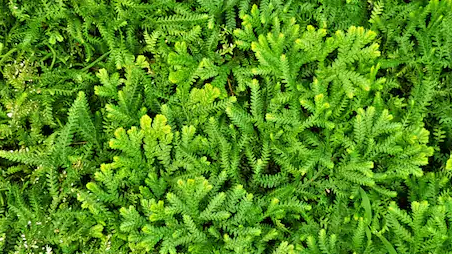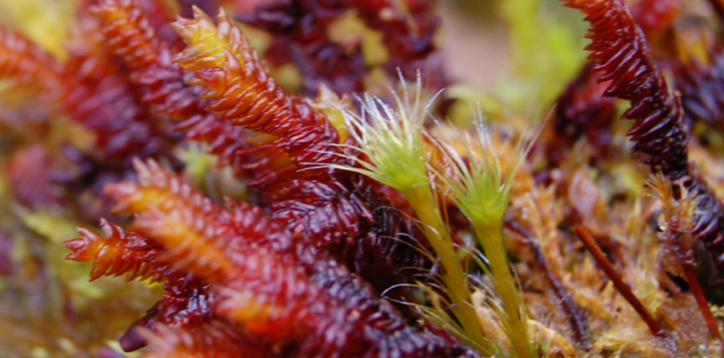What Are Bryophytes?
Bryophytes are a group of plant species that reproduce via spores rather than flowers or seeds. Most of bryophytes are found in damp environments and lack specialized water-conducting tissues. Examples of bryophytes include: liverworts, the mosses and hornworts. Many bryophytes usually have the following characteristics:
- The sporophytes of bryophytes are unbranched, producing a single spore-producing capsule known as sporangium.
- They all have a dominant gametophyte stage in their life cycle.
- They do not have roots, but have rhizoids which are relatively simple.
- They grow primarily in damp environments.
- They are nonvascular land plants.

What You Need To Know About Bryophytes
- Bryophytes are embryophytes that are non-vascular in other words; they have no xylem and phloem.
- Prominent phase in the life of bryophytes is haploid gametophyte.
- Gametophyte and Sporophyte in bryophytes are physically connected unlike in the pteridophytes.
- Bryophytes live in moist shady places.
- The plant body of bryophytes is usually undifferentiated. In higher groups like mosses, the plant body is differentiated into root-like, stem-like and leaf-like structures.
- Vascular tissue is completely absent in bryophytes.
- In bryophytes, haploid or gametophytic phase is longer lived while sporophytic phase is short lived.
- In bryophytes, the neck of the archegonia is long, containing six vertical rows of cells.
- In bryophytes, gametophyte is dominant.
- True roots are absent in bryophytes.
- Antheridium is stacked in bryophytes.
- In Bryophyte, leaves if present are microphyllus (having no leaf gap).
- Examples of bryophytes are Sphagnum, Polytrichum, Funaria, Marchantia, Riccia etc.
Also Read: Difference Between Homosprous And Heterosporous Pteridophytes
What Are Pteridophytes?
Pteridophytes are a group of plant species that have roots, stems and leaves but lack flowers or seeds. Most of the pteridophytes are found in cool, damp, shady places though some may flourish well in sandy soil conditions. Also they have a specialized food and water-conducting tissues (Xylem and phloem). Examples of pteridophytes include horsetails and ferns. Many pteridophytes usually have the following characteristics:
- The main plant body is a sporophyte which is differentiated into true root, stem and leaves.
- The leaves in pteridophytes can be small as in selaginelia or large as in ferns.
- They posses vascular tissues (xylem and phloem).
- The sporangia produce spores by meiosis in spore mother cells.

What You Need To Know About Pteridophtes
- Pteridophytes are vascular plants (have xylem and phloem). They also reproduce via spores.
- The prominent phase in the life of Pteridophyte is diploid sporophyte.
- In the pteridophytes where the Sporophytic stage and Gametophytic stage are separate and not physically connected to each other.
- Pteridophytes live in terrestrial environments.
- Pteridophyte plant body is well differentiated into stem, root and leaves.
- Vascular tissue is very much present in pteridophytes.
- Pteridophytes on the other hand, diploid or sporophytic phase is longer lived while gametophytic phase is shorter lived.
- The neck of archegonia in pteridophytes is short, containing four vertical rows of cells.
- In pteridophytes, sporophytes is not dominant.
- In pteridophytes true roots are present.
- In pteridophytes, antheridium is sessile.
- In pteridophyte, leaves if present are microphyllus (having no leaf gap).
- Examples of pteridophytes are Psilotum, Lycopodium, Selaginella, Pteris, Angiopteris, Adiantum.
Also Read: Difference Between Cryptogams And Phanerogams
Difference Between Bryophytes And Pteridophytes In Tabular Form
| Basis of Comparison | Bryophytes | Pteridophytes |
| What are they | Bryophytes are embryophytes that are non-vascular in other words; they have no xylem and phloem. | Pteridophytes are vascular plants (have xylem and phloem). They also reproduce via spores. |
| Life cycle | Prominent phase in the life of bryophytes is haploid gametophyte. | The prominent phase in the life of Pteridophyte is diploid sporophyte. |
| Gametophyte and Sporophyte | Gametophyte and Sporophyte in bryophytes are physically connected unlike in the pteridophytes. | The Sporophytic stage and Gametophytic stage are separate and not physically connected to each other. |
| The Neck of archegonia | The neck of the archegonia is long, containing six vertical rows of cells. | The neck of archegonia in pteridophytes is short, containing four vertical rows of cells. |
| Dominancy | Gametophyte is dominant. | Sporophytes is dominant. |
| Roots | True roots are absent. | True roots are present. |
| Antheridium | Antheridium is stacked. | Antheridium is sessile. |
| Leaves | Leaves if present are microphyllus (having no leaf gap). | Leafs may be microphyllus or macrophyllus (with leaf gaps). |
| Example | Examples of bryophytes are Sphagnum, Polytrichum, Funaria, Marchantia, Riccia etc | Examples of pteridophytes are Psilotum, Lycopodium, Selaginella, Pteris, Angiopteris, Adiantum. |
Also Read: Difference Between Vascular And Non-vascular Plants
Similarities between Bryophytes and Pteridophytes
- Fertilization and embryo development is similar in both bryophytes and pteridophytes.
- In both pteridophytes and bryophytes, water is very much essential for fertilization.
- Both have multicellular sex organs.
- Both reproduce asexually by spores.
- Archegonia in both bryophytes and pteridophytes have neck and venter.
- In both groups, zygote is retained in the archegonia after fertilization.
Summary
Bryophytes are a group of plant species that reproduce via spores rather than flowers or seeds. Most of bryophytes are found in damp environments and lack specialized water-conducting tissues. Examples of bryophytes include: liverworts, the mosses and hornworts. Pteridophytes on the other hand, are a group of plant species that have roots, stems and leaves but lack flowers or seeds. Most of the pteridophytes are found in cool, damp, shady places though some may flourish well in sandy soil conditions. Also they have a specialized food and water-conducting tissues (Xylem and phloem).
